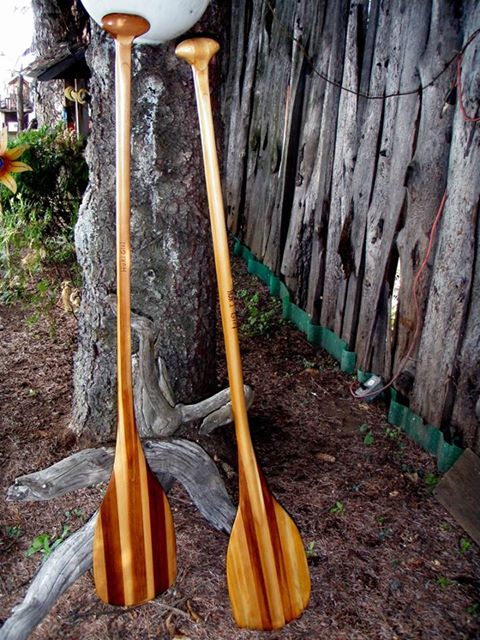
Bent canoe paddles are just what the name implies—there is a bend in the paddle shaft where the blade meets the shaft. This bend can be from 5 to 20 degrees, but the most popular bend appears to be either 10 or 12 degrees with 14 degrees next in popularity.
Design Theory of Bent Canoe Paddles
The theory is that with a straight shaft paddle, the blade is only perpendicular to the water during a portion of the stroke, and near the end of the stroke the paddle blade is actually pushing the water up, thus losing speed. With the bent paddle however, the blade remains perpendicular for a longer portion of the stroke and nearly eliminates pushing water up, and therefore maintains more speed.
The experts tell us that the bent paddle requires substantially less energy over a given distance, and provides more speed with the same amount of energy expended. This is probably why canoe racers were early adopters of bent canoe paddles.
There is also the advantage for a bow paddler when changing sides with their paddle, because the bent paddle will be angled up when passing over the bow. Just make sure you don’t let the paddle turn around in your hands, or you will be paddling with the bend backwards and more than likely you will be shoveling water into the canoe.
Double Bent Paddle
Someone once did some ergonomic studies and decided that a double bend in the shaft of the paddle would be better than a single bend…ergonomically. Although these paddles are on the market, I still consider them to be experimental. Admittedly, I have never used one to paddle with, but frankly, just holding one was somewhat spooky.
I would leave designs like the double bent paddle to the professional canoe racers who are constantly trying to maximize speed with the least amount of effort.
Bent Canoe Paddles for Racers Only?
There is no question that a bent shaft canoe paddle gives slightly more speed for the same amount of effort. That is why most canoe racers use a bent shaft paddle…they are seeking any edge they can get for more speed.
At the same time, there are many serious recreational canoeists who use these bent paddles because they claim they reduce fatigue over a long trip. I have never found this to be the case, but then again I have never pushed myself to the point of physical exhaustion when paddling recreationally. At any rate, you may see many bent paddles among the recreational canoeing fraternity.
Bottom Line
Only by trying out a few bent paddles will you ever be able to determine if one of them suits your personal style of paddling. Many canoeists carry a bent shaft paddle as their spare, and use it when traversing large bodies of water to maximize speed and minimize the time they are exposed on open water.
But, to be totally honest, I find bent shaft paddles to be disturbing…and even though I own a couple, I never use them anymore. I no longer have any interest in speed. I have come to regard paddling a canoe as being very close to a spiritual experience, where I not only become close to nature, but I can almost hear the old Canadien Voyageurs singing their canoeing songs while opening up the Canadian wilderness to transportation and trade.
I wonder what those magnificent canoeists would think of bent canoe paddles?